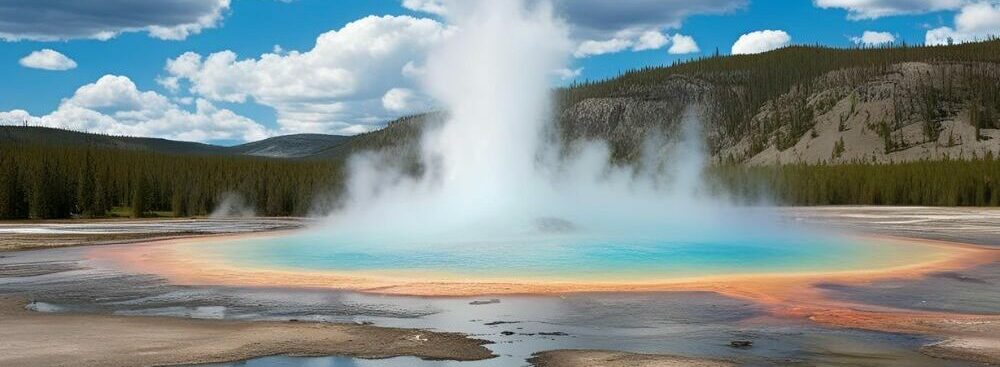Cabin building in the 19th century wasn’t just about creating a home; it was a vital part of settling new territories and shaping communities. These cabins were more than mere shelters—they stood as symbols of determination and innovation, crafted by pioneers who often had little more than hand tools and a strong will to survive.
A typical 19th-century cabin was a simple log structure, usually a single room that served multiple purposes. These cabins were both homes and workspaces, offering warmth and protection against the often harsh and unpredictable climates.
Understanding why these cabins were built can give us insight into the lives of the settlers who constructed them. This era saw massive waves of migration, with individuals and families moving westward in search of new opportunities. Building a cabin was often one of the first steps in establishing a livelihood and permanence in unfamiliar lands. Such construction not only required physical strength but also a deep knowledge of local resources and traditional building practices.
These cabins have a lot to teach us today about resilience and resourcefulness. They remind us of a time when cabin construction was a communal event, relying on the shared labor and skills of the community. It was all about using what was available. The wood was often hand-hewn on site, and every piece of a cabin had a purpose, reflecting the creativity and adaptability of those early builders.
Essential Hand Tools for Cabin Construction
Let’s start with the axe, the star of cabin building back in the day. Whether chopping down trees or splitting logs, the axe was indispensable. A good axe was worth its weight in gold for those settler folks carving out a living on the frontier.

Next up, the adze. If you haven’t used one, think of it as a sideways axe that’s perfect for shaping and smoothing timbers. Without this tool, getting the right fit for the logs would’ve been a nightmare. It turned rough wood into something builders could actually work with, making everything fit snugly in place.
Then there’s the auger, a bit of an MVP for making holes. Pioneers didn’t have fancy drills, so these spiral tools did all the heavy lifting when it came to creating holes for wooden pegs, which held their cabins together. It’s a simple tool but oh-so-effective.
Of course, different saws were used for all sorts of tasks. Crosscut saws helped take down trees, while smaller ones trimmed and shaped wood, kind of like today’s saws but all by hand. Imagine the effort! Each tool played a part in turning raw forest into a cozy home.
These hand tools weren’t just random bits thrown together. They were a toolkit refined over generations and essential to the whole cabin-making process. Keeping them in good shape was another story entirely. Think sharpening axes under the wide open sky and oiling tools to fight off rust. It required know-how and dedication for tools to stand the test of time.
Innovative Techniques and Methods Applied by Pioneer Builders
Crafting a cabin in the 19th century wasn’t just about the tools—it was about the techniques pioneers used. Joinery, for example, was all about getting those logs to fit together perfectly without a lick of modern equipment. Techniques like notching created tight fits and helped the structures stay put, even in high winds and heavy snow.
Selecting and preparing logs was a whole process in itself. Settlers would scout for straight trees, ideally seasoned and free of warp. It wasn’t just about cutting and stacking; the logs needed to be prepped to prevent twisting or cracking. Time and patience paid off, producing sturdy homes.
Chinking was another art form. This technique filled the gaps between logs with a mix of whatever was handy—like clay, lime, or moss. It was essential for keeping out drafts and critters. Knowing how to choose and mix these materials was just as crucial as having the right tools.
The roof was more than just a cover; it was the home’s first line of defense against the weather. Roof designs varied, with some builders using wooden shingles and others going for a thatched look. Getting the pitch just right was critical for shedding water and withstanding storms.
These old-timey techniques have lessons for us still. They focused on maximizing available resources while minimizing waste. Each method came from necessity and a keen understanding of the environment. Learning about these practices is a window into the clever and resourceful minds of pioneer builders.
The Legacy of 19th-Century Cabin Building Techniques in Modern Times
Looking at cabins today, you might not realize how much they’ve borrowed from the 19th-century pioneers. Modern cabins often mimic that old-school charm with their log walls and rustic vibe, but they come with a lot more comfort and less manual labor. Central heating, anyone? Yet, those time-tested techniques still find their way into modern builds, especially for folks going off-grid.
Sustainability is a big buzzword now, but back in the day, it was just common sense. Pioneers built cabins with what they found nearby, avoiding waste before it was even a thing to worry about. Today, more cabin builders are turning back to these eco-friendly practices, using materials that have a low environmental impact.
For those passionate about history, preserving and restoring 19th-century cabins is a way to keep these stories alive. People are figuring out how to honor original designs while updating structures to last even longer. It’s all about balancing old-school craftsmanship with new technologies.
There’s also a growing scene of DIY enthusiasts who look to the past for inspiration. Embracing those pioneer methods, people are all about building their own cabins, seeking that same satisfaction of a job well done as their ancestors once did. It’s more than just a structure—it’s about connecting with history, with crafts that many thought were lost to time.





